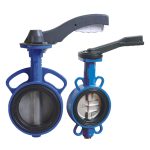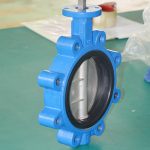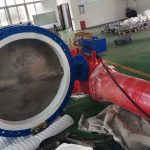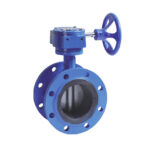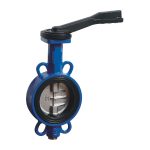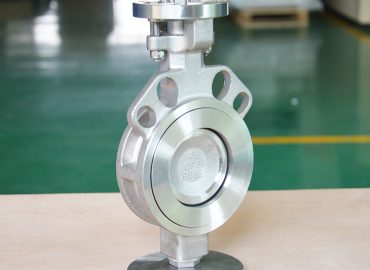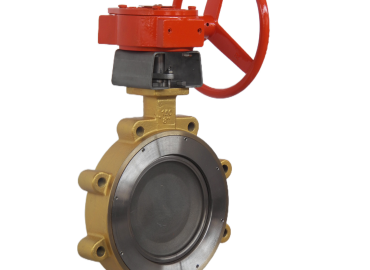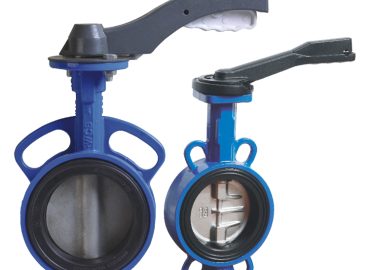Butterfly valves are a popular choice for controlling the flow of fluids in various industrial processes. Class 300 butterfly valves are designed to handle higher pressure and temperature applications. However, proper flow control is essential in any valve to ensure efficient operation and prevent damage to the valve, piping, or other equipment. Therefore, understanding the type of flow control necessary for a butterfly valve class 300 is crucial for selecting the right valve and ensuring optimal performance.
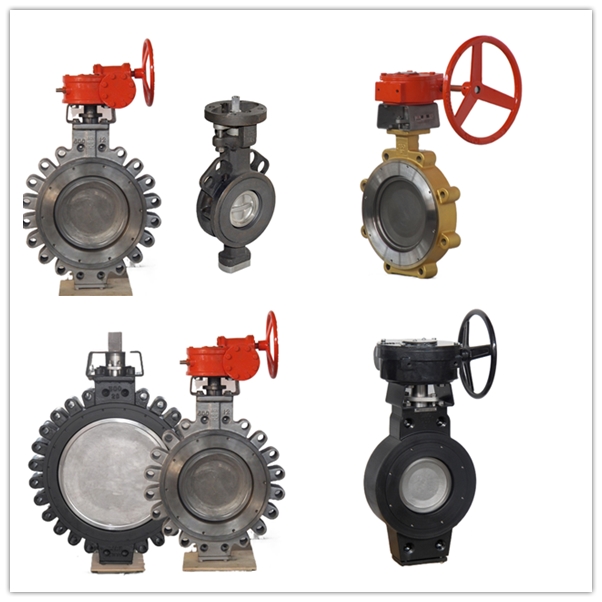
Introduction
The type of flow control necessary for a butterfly valve class 300 is dependent on the specific application and fluid being transported. Generally, a modulating butterfly valve is recommended for precise and accurate flow control. Modulating butterfly valves allow for gradual adjustments in flow rates and can provide tighter shut-off capabilities compared to other valve types. Additionally, some applications may require the use of a bypass valve or flow control accessory to regulate flow. It’s essential to consult with a qualified engineer or valve specialist to determine the most appropriate flow control method for your specific needs.
Explanation of butterfly valves
Butterfly valves are quarter-turn valves that control the flow of fluids in a pipeline. They consist of a metal disc, mounted on a stem, which rotates to allow or block flow in the pipeline. When the valve is fully open, the disc is perpendicular to the flow, allowing for minimal obstruction and high flow rates. Butterfly valves are popular due to their simple design, ease of use, and low cost. They are commonly used in applications that require quick shutoff, as they can be closed quickly by turning the disc 90 degrees. Furthermore, butterfly valves can handle large volumes of flow with low-pressure drops, making them ideal for industrial processes where efficient flow control is essential.
Importance of selecting the right flow control for class 300 butterfly valves
Selecting the right flow control for class 300 butterfly valves is crucial for optimal performance and efficiency. These valves are designed to handle high-pressure and high-temperature applications, making them ideal for use in a variety of industrial processes. However, the wrong flow control method can lead to issues such as reduced flow rates, increased pressure drops, and premature wear and tear on the valve and other equipment. By selecting the appropriate flow control method, users can ensure precise and accurate flow rates, increased system reliability, and reduced maintenance costs. It’s essential to consult with a qualified engineer or valve specialist to determine the most appropriate flow control method for your specific needs to ensure that your class 300 butterfly valve operates efficiently and effectively.
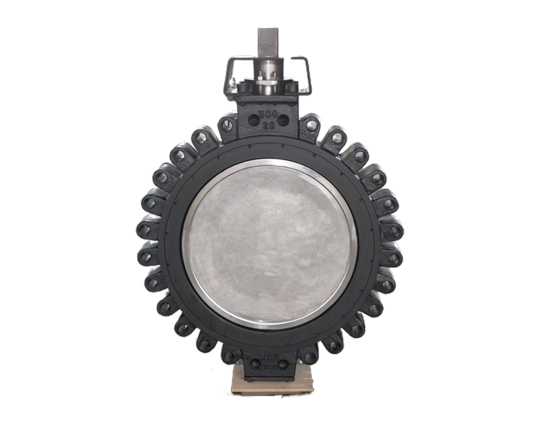
Understanding the Class 300 Designation
The Class 300 designation is an important specification for butterfly valves and other pipeline components. It refers to a pressure rating that indicates the maximum allowable pressure the valve can withstand under a given set of operating conditions. In this case, Class 300 butterfly valves can handle pressures up to 300 pounds per square inch (psi) or approximately 20.7 bar. This rating is based on factors such as the valve’s size, material, and temperature range. Understanding the Class 300 designation is critical when selecting a butterfly valve for a specific application to ensure that the valve is capable of withstanding the required pressure without failure. It’s important to note that exceeding the rated pressure of a valve can lead to catastrophic failure, resulting in property damage, injuries, or even loss of life. Therefore, it’s vital to consult with a qualified engineer or valve specialist to ensure that the correct class rating is selected for your specific needs.
Overview of ANSI/ASME pressure ratings
The American National Standards Institute (ANSI) and the American Society of Mechanical Engineers (ASME) have established standards for pressure ratings on valves and other pipeline components. These standards provide a common language for the maximum allowable pressure that a valve can withstand under specific operating conditions. The ANSI/ASME pressure ratings range from Class 150 to Class 2500, with each class rating indicating the maximum allowable pressure in psi or bar. The higher the class rating, the greater the pressure the valve can handle. These pressure ratings are based on factors such as material, temperature range, and valve size. It’s important to select a valve with the appropriate ANSI/ASME pressure rating for your specific application to ensure optimal performance and safe operation. Failure to do so can result in property damage, injuries, or even loss of life.
Explanation of class 300 designation
The Class 300 designation is a standard pressure rating used for industrial valves and piping components. It refers to the maximum allowable pressure that a valve can withstand under specific operating conditions. In the case of Class 300 butterfly valves, they are designed to handle pressures up to 300 pounds per square inch (psi) or approximately 20.7 bar. The class rating is determined based on factors such as valve size, material, and temperature range, among other variables. The primary advantage of using Class 300 butterfly valves is their ability to handle high-pressure and high-temperature applications with ease. However, it’s crucial to ensure that the valve selected for a given application complies with the required ANSI/ASME standards and the system’s intended pressure and temperature range. Failing to do so can lead to valve failure, which can result in damage to equipment, injuries, or even fatalities in severe cases.
Types of Flow Control for Butterfly Valves
There are several types of flow control methods that can be used with butterfly valves, depending on the specific application. One common method is the use of gear-operated or electrically-operated actuators, which allow for precise and accurate control of the valve’s position and flow rate. Another method is the use of a modulating control valve, which allows for gradual adjustment of the flow rate to maintain a consistent pressure or flow. Additionally, some butterfly valves may require a bypass valve or flow control accessory to regulate flow rates accurately. The type of flow control selected will depend on several factors, including the fluid being transported, the required flow rate, and the intended pressure and temperature range. It’s crucial to consult with a qualified engineer or valve specialist when selecting the most appropriate flow control method for a specific application to ensure optimal performance and safe operation.
Manual flow control
Manual flow control is a simple and cost-effective method for regulating the flow of fluids through a pipeline. In butterfly valves, this is typically achieved by manually turning a lever or handwheel to adjust the position of the valve disc. This allows for precise and accurate manual control of the flow rate, making it ideal for applications that require infrequent adjustments or where automation is not required or practical. Manual flow control is also useful for applications with high-temperature or high-pressure fluids, which can be challenging to control with automated systems. Additionally, manual flow control is often easy to implement and requires minimal maintenance, reducing overall costs. However, manual flow control may not be as precise or efficient as an automated system and may require additional training for operators to ensure safe operation.
Automated flow control
Automated flow control is a highly efficient and precise method of regulating the flow of fluids through a pipeline. In butterfly valves, this is typically achieved by using an electric or pneumatic actuator to adjust the position of the valve disc automatically. This allows for accurate and reliable control of the flow rate, making it ideal for applications that require frequent adjustments or where maintaining a specific flow rate is critical. Automated flow control systems can also be linked to computerized control systems and sensors for real-time monitoring and feedback, further improving efficiency and accuracy. Additionally, automated flow control systems are often more responsive and can be adjusted quickly, reducing the risk of damage to equipment or delays in production. However, automated flow control systems may be more expensive to implement and maintain than manual systems, and they may require additional training for operators to ensure safe operation.
Selecting the Right Flow Control for Class 300 Butte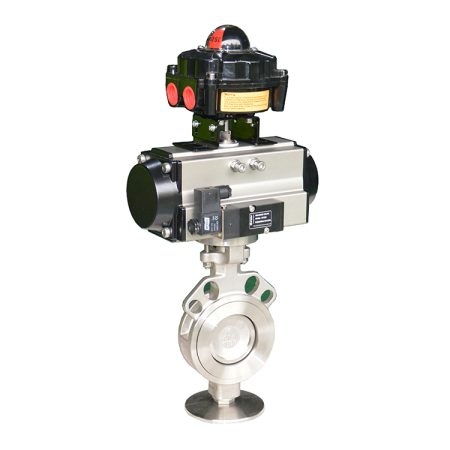 rfly Valves
rfly Valves
Selecting the right flow control for butterfly valves is essential to ensure optimal performance, reliability, and safe operation. The type of flow control selected will depend on several factors, including the fluid being transported, the required flow rate, the intended pressure and temperature range, and the level of precision and automation required. Some common flow control methods for class 300 butterfly valves include manual flow control, gear or electrically operated actuators, and modulating control valves. Automated flow control systems are also popular for applications that require frequent adjustments or monitoring. It’s crucial to consult with a qualified engineer or valve specialist when selecting the most appropriate flow control method for a specific application. This ensures that the valve and its associated equipment comply with the required ANSI/ASME standards and the system’s intended pressure and temperature range. Failure to select the correct flow control can result in valve failure, equipment damage, injuries, or even fatalities.
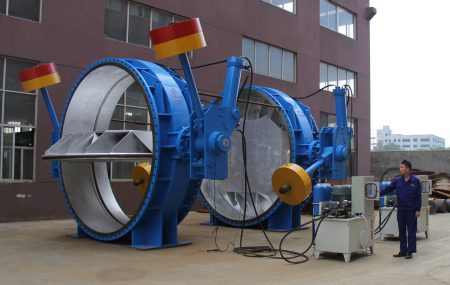
Consideration of Flow Rate
When selecting a flow control method for class 300 butterfly valves, the flow rate is a crucial consideration. Butterfly valves are designed to handle high flow rates with low-pressure drops, making them ideal for industrial processes where efficient flow control is essential. The selected flow control method should ensure that the valve can regulate the flow rate accurately and consistently over a range of different operating conditions. This can be achieved through manual or automated systems, depending on the application’s specific needs. It’s important to remember that exceeding a valve’s maximum flow rate can lead to premature wear and tear, reduced performance, and increased maintenance costs. Therefore, it’s crucial to consult with a qualified engineer or valve specialist when selecting the most appropriate flow control method for your specific application. They can help you calculate the required flow rates and recommend the most appropriate flow control method to ensure optimal performance and safe operation.
Consideration of Operating Pressure
When it comes to designing and operating a system, consideration of the operating pressure is of utmost importance. Operating pressure refers to the pressure at which a system or component is designed to operate safely and effectively. If the pressure is too high, it can cause damage to the system or even lead to catastrophic failure. Conversely, if the pressure is too low, the system may not function as intended. Therefore, understanding the operating pressure requirements of a system and taking appropriate measures to maintain them is critical for ensuring its optimal performance and longevity. This includes choosing the right materials, components and equipment that are rated for the required pressure range, as well as implementing proper pressure monitoring and control systems to prevent any over or under-pressurization.
Consideration of Fluid Type
Consideration of fluid type is also a key factor in designing and operating a system. Fluid type refers to the chemical properties, viscosity, density, and other characteristics of the fluid that flows through the system. Different fluids have different flow rates, pressure drop, and heat transfer properties, which can affect the overall performance and efficiency of the system. Failure to consider the fluid type can lead to issues such as corrosion, erosion, cavitation, and blockages, all of which can cause damage to the system and impair its ability to operate effectively. Therefore, it is important to select the appropriate materials, equipment, and components that are compatible with the fluid being used, as well as ensuring that the system is designed and optimized to handle the specific characteristics of the fluid. This includes taking into account factors such as temperature, pressure, and flow rate, among others, to ensure that the system is operating safely and efficiently.
Consideration of Valve Size
Valve size is another critical factor that needs to be taken into consideration when designing and operating a system. The valve size refers to the diameter of the opening within the valve that controls the flow of fluid through the system. Choosing the right valve size is important because it affects the flow rate, pressure drop, and overall efficiency of the system. If the valve size is too small, it can create a bottleneck in the system resulting in reduced flow rates and increased pressure drops. Conversely, if the valve size is too large, it can lead to excessive flow rates that can cause damage to the system or result in safety hazards. Therefore, it is important to select the appropriate valve size based on factors such as the required flow rate, pressure drop, and the properties of the fluid being used. This ensures that the valve is able to control the flow of fluid effectively while maintaining optimal performance and safety standards.
Consultation with a qualified engineer
Consultation with a qualified engineer is a crucial step in ensuring that a system is designed and operated effectively. A qualified engineer has the expertise and knowledge necessary to analyze the needs of the system, identify potential risks, and provide recommendations for the best course of action. They can also help to ensure compliance with relevant industry standards and regulations. By consulting with an engineer, it is possible to avoid potential issues and ensure that the system operates safely and efficiently. Additionally, an engineer can provide valuable insights into the selection of materials, equipment, and components needed for the system, as well as offer guidance on maintenance and troubleshooting procedures. Ultimately, working with a qualified engineer can help to minimize costs, improve system performance, and increase overall safety and reliability.
Conclusion
In conclusion, a butterfly valve class 300 requires appropriate flow control to ensure optimal performance and safety. The type of flow control needed depends on the specific requirements of the system, such as the flow rate and pressure drop. This can be achieved through the use of various accessories such as actuators, positioners, and limit switches.
Actuators are the most common accessory used for flow control in butterfly valves class 300. They provide automatic control of the valve’s position and can be powered by electricity valve, pneumatics, or hydraulics. Pneumatic actuators are the most commonly used type and are known for their reliability, simplicity, and cost-effectiveness.
Positioners are another essential accessory that can be used to help regulate the flow of fluid through the system. They provide feedback to the control system on the valve’s position, ensuring that the valve is positioned correctly based on the setpoint. This helps to maintain the desired flow rate and pressure drop, ensuring that the system operates efficiently and effectively.
Limit switches can also be used to provide an additional level of safety and control in butterfly valves class 300. These switches are designed to activate when the valve reaches a specific position, such as fully open or fully closed. They can be used to send signals to the control system, indicating whether the valve is in the correct position or if there are any issues that need to be addressed.
In summary, there are several options available for flow control in butterfly valves class 300, including actuators, positioners, and limit switches. Each option has its own unique advantages and disadvantages, depending on the specific needs of the system. By consulting with a qualified engineer and selecting the appropriate accessories, it is possible to ensure that the butterfly valve class 300 operates safely, reliably, and efficiently.
Summary of key points
In summary, consideration of operating pressure, fluid type, and valve size are all critical factors that must be taken into account when designing and operating a system. Operating pressure refers to the pressure at which a system or component is designed to operate safely and effectively. Fluid type refers to the chemical properties, viscosity, density, and other characteristics of the fluid that flows through the system. Valve size refers to the diameter of the opening within the valve that controls the flow of fluid through the system. Consultation with a qualified engineer is also essential in ensuring that the system is designed and operated effectively. Finally, appropriate flow control accessories such as actuators, positioners, and limit switches can help to regulate the flow of fluid through butterfly valves class 300. By considering all of these key points, it is possible to ensure that the system operates safely, reliably, and efficiently, while minimizing costs and maximizing performance.
Importance of selecting the right flow control for class 300 butterfly valves
Selecting the right flow control for class 300 lug butterfly valves is essential for maintaining proper operation and safety of the system. The wrong selection could lead to a decrease in performance, damage to equipment, or even catastrophic failure. Since butterfly valves class 300 are commonly used in high-pressure applications, maintaining optimal performance is crucial to ensure that the system operates efficiently and safely. Appropriate flow control accessories such as actuators, positioners, and limit switches are necessary to regulate the flow of fluid through the valve, providing accurate and reliable control. By selecting the right flow control for class 300 butterfly valves, it is possible to maintain optimal performance, extend the life of the system, and minimize the risk of accidents or failures. It is therefore important to work with a qualified engineer and carefully consider the specific requirements of the system when selecting flow control accessories for butterfly valves class 300.



